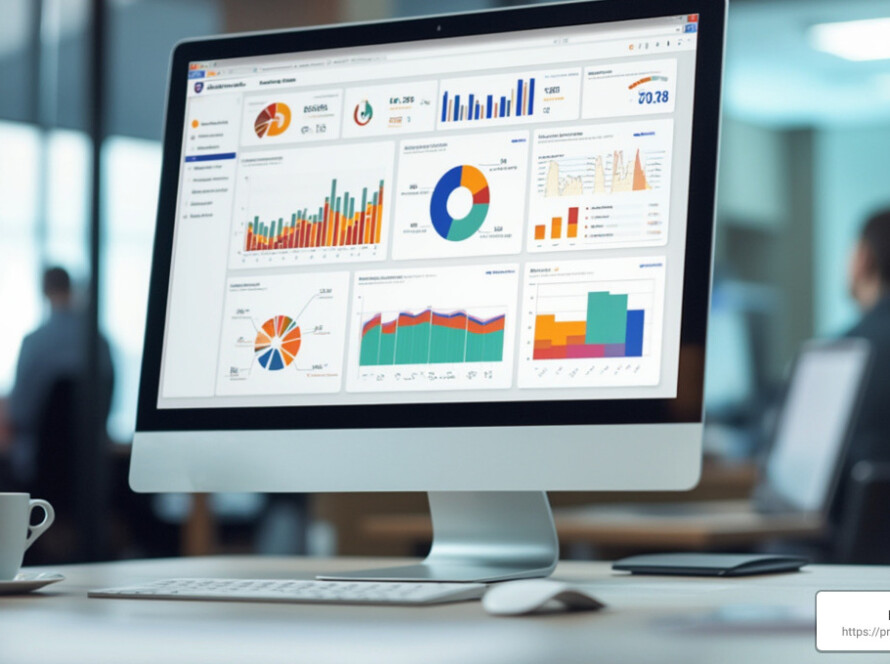Every business owner aspires to see their businesses flourish, with revenue and profit reaching new heights. However, this ambition comes with its set of challenges, as elevating revenue demands a profound understanding of business intricacies, pinpointing critical revenue-generating areas.
In the ever-dynamic world of business, where change is constant, achieving a steady revenue stream prompts a crucial question: How can we enhance this performance further? The answer lies not merely in increasing sales but in optimizing the revenue already generated.
Unlike a simple one-time thing, revenue optimization is a sophisticated process that requires careful consideration and the right set of changes.
This comprehensive blog aims to provide an in-depth understanding of revenue optimization, from its definition to practical strategies, implementation steps, and real-world examples.
What is Revenue Optimization?
Revenue optimization is a strategic approach aimed at maximizing a business’s revenue potential by leveraging data, analytics, and various tactics to optimize pricing, distribution, and product availability. Unlike mere revenue maximization, which focuses solely on increasing sales volume, revenue optimization emphasizes achieving the optimal equilibrium between price, demand, and operational constraints. It involves a holistic view of a company’s revenue streams, encompassing customer acquisition, retention, expansion, and pricing strategies.
Key Components of Revenue Optimization
Acquisition Strategies
Successful revenue optimization starts with effective customer acquisition strategies. This involves understanding the target market, identifying the most lucrative customer segments, and implementing marketing campaigns that resonate with potential customers. By acquiring customers strategically, businesses can set the stage for long-term revenue growth.
Retention Tactics
Retaining existing customers is equally crucial for sustained revenue optimization. Implementing customer-centric strategies, providing exceptional service, and fostering loyalty programs are key components of retention tactics. Loyal customers not only contribute to recurring revenue but can also become advocates, driving additional customer acquisition through referrals.
Expansion Initiatives
Revenue optimization extends beyond existing customer bases to include expansion strategies. This may involve upselling and cross-selling additional products or services to current customers. By identifying opportunities to meet additional needs within the existing customer base, businesses can increase their share of wallets and drive incremental revenue.
Pricing Strategies
Dynamic pricing models play a central role in revenue optimization. Businesses must adapt their pricing strategies based on factors such as demand, seasonality, and competitor pricing. Implementing dynamic pricing ensures that products or services are priced optimally, maximizing revenue without compromising on competitiveness.
Implementing Revenue Optimization: A Step-by-Step Guide
Conduct a Comprehensive Market Analysis
Begin revenue optimization by conducting an in-depth analysis of the market landscape. Identify competitors, scrutinize customer behavior, and understand market dynamics. This information forms the foundation for developing effective revenue optimization strategies tailored to specific market conditions.
Utilize Data Analytics
Unlock the power of advanced data analytics tools to gather and analyze data related to customer behavior, market trends, and historical sales. These insights enable data-driven decision-making in pricing strategies, demand forecasting, and inventory management, providing organizations with a competitive edge in the dynamic market environment.
Implement Dynamic Pricing Models
Develop and implement dynamic pricing strategies that adapt to changing market conditions in real time. This may involve making adjustments based on factors such as demand spikes, competitor pricing changes, or seasonal variations, ensuring that pricing aligns with market dynamics for optimal revenue generation.
Embrace Technology Solutions
Embrace innovative revenue optimization software and tools that automate processes, enhance data analysis capabilities, and facilitate real-time decision-making. These technological solutions empower businesses to respond swiftly to market changes and dynamic customer behaviors, enabling agility in the face of evolving market dynamics.
Prioritize Customer Experience
Acknowledge that customer satisfaction is a cornerstone of revenue optimization. By providing a seamless and positive customer experience, businesses can foster customer loyalty, encourage repeat business, and generate positive word-of-mouth marketing, all of which contribute to sustained revenue growth.
Continuous Monitoring and Adjustment
Recognize that revenue optimization is an ongoing process that requires continuous monitoring and adjustment. Regularly assess the effectiveness of implemented strategies and be prepared to adapt to changing market dynamics swiftly. The ability to pivot based on real-time data insights ensures that revenue optimization remains a dynamic and responsive strategy.
Real-World Examples of Successful Revenue Optimization
Airlines
Airlines have been trailblazers in revenue optimization through the implementation of yield management strategies. By adjusting ticket prices based on factors such as demand, time of booking, and seat availability, airlines optimize revenue while efficiently filling planes, exemplifying the power of dynamic pricing models.
E-Commerce Platforms
Online retailers, exemplified by industry giant Amazon, deploy dynamic pricing algorithms that consider competitor prices, customer behavior, and demand fluctuations to adjust product prices in real time. This strategic approach allows them to stay competitive and maximize revenue in the fiercely dynamic e-commerce landscape.
Hotel Chains
Leading hotel chains leverage sophisticated demand forecasting models to anticipate fluctuations in room demand. By adjusting room rates based on predicted demand, hotels optimize revenue and occupancy rates, showcasing the strategic importance of demand forecasting in the hospitality industry.
Subscription Services
Streaming services like Netflix have successfully harnessed revenue optimization through subscription models. By offering tiered subscription plans and a freemium model for new users, they cater to a broader audience while encouraging upgrades for premium features, showcasing the effectiveness of customer segmentation strategies.
In the competitive landscape of 2024, where markets are dynamic and consumer preferences rapidly evolve, mastering the art of revenue optimization is a strategic imperative. By comprehensively understanding and implementing strategies related to pricing, demand forecasting, inventory management, and customer segmentation, businesses can unlock their full revenue potential.
Embracing a holistic approach and staying agile in response to market dynamics position organizations not only to thrive in the present but also to get through the evolving landscape with resilience and foresight.


